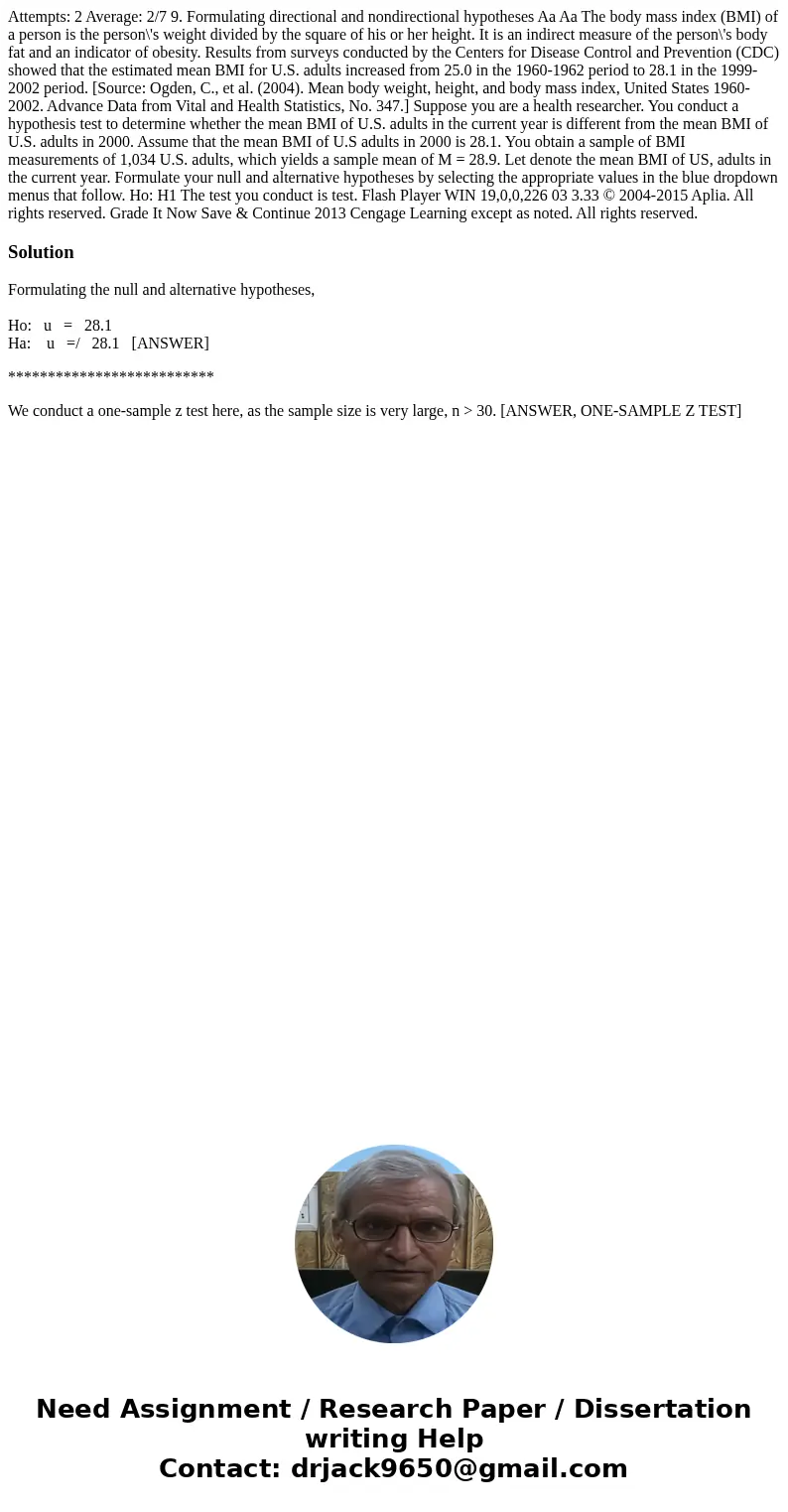Attempts 2 Average 27 9 Formulating directional and nondirec
Attempts: 2 Average: 2/7 9. Formulating directional and nondirectional hypotheses Aa Aa The body mass index (BMI) of a person is the person\'s weight divided by the square of his or her height. It is an indirect measure of the person\'s body fat and an indicator of obesity. Results from surveys conducted by the Centers for Disease Control and Prevention (CDC) showed that the estimated mean BMI for U.S. adults increased from 25.0 in the 1960-1962 period to 28.1 in the 1999-2002 period. [Source: Ogden, C., et al. (2004). Mean body weight, height, and body mass index, United States 1960-2002. Advance Data from Vital and Health Statistics, No. 347.] Suppose you are a health researcher. You conduct a hypothesis test to determine whether the mean BMI of U.S. adults in the current year is different from the mean BMI of U.S. adults in 2000. Assume that the mean BMI of U.S adults in 2000 is 28.1. You obtain a sample of BMI measurements of 1,034 U.S. adults, which yields a sample mean of M = 28.9. Let denote the mean BMI of US, adults in the current year. Formulate your null and alternative hypotheses by selecting the appropriate values in the blue dropdown menus that follow. Ho: H1 The test you conduct is test. Flash Player WIN 19,0,0,226 03 3.33 © 2004-2015 Aplia. All rights reserved. Grade It Now Save & Continue 2013 Cengage Learning except as noted. All rights reserved. 
Solution
Formulating the null and alternative hypotheses,
Ho: u = 28.1
Ha: u =/ 28.1 [ANSWER]
**************************
We conduct a one-sample z test here, as the sample size is very large, n > 30. [ANSWER, ONE-SAMPLE Z TEST]

 Homework Sourse
Homework Sourse